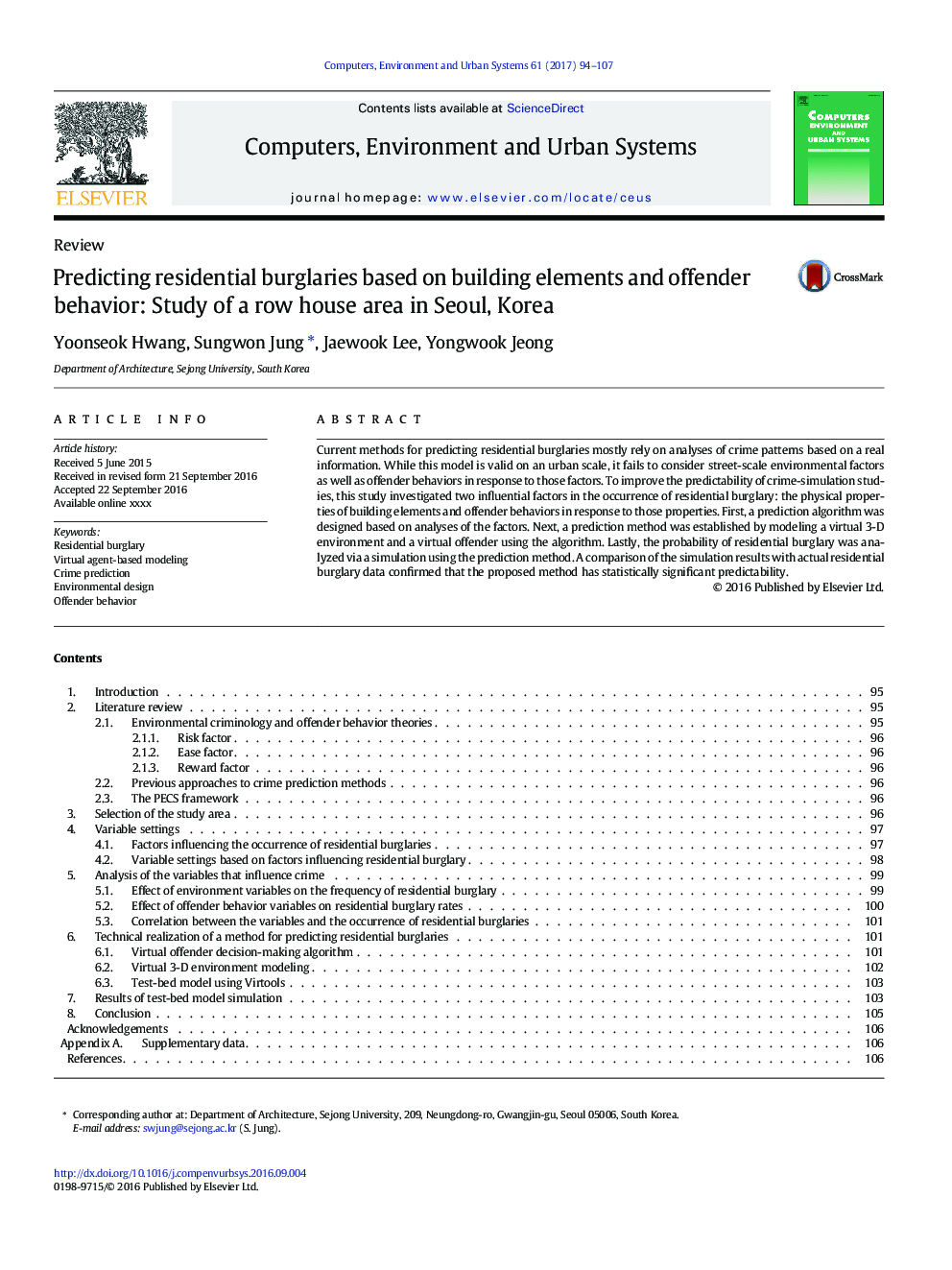| Article ID | Journal | Published Year | Pages | File Type |
|---|---|---|---|---|
| 4965128 | Computers, Environment and Urban Systems | 2017 | 14 Pages |
Abstract
Current methods for predicting residential burglaries mostly rely on analyses of crime patterns based on a real information. While this model is valid on an urban scale, it fails to consider street-scale environmental factors as well as offender behaviors in response to those factors. To improve the predictability of crime-simulation studies, this study investigated two influential factors in the occurrence of residential burglary: the physical properties of building elements and offender behaviors in response to those properties. First, a prediction algorithm was designed based on analyses of the factors. Next, a prediction method was established by modeling a virtual 3-D environment and a virtual offender using the algorithm. Lastly, the probability of residential burglary was analyzed via a simulation using the prediction method. A comparison of the simulation results with actual residential burglary data confirmed that the proposed method has statistically significant predictability.
Related Topics
Physical Sciences and Engineering
Computer Science
Computer Science Applications
Authors
Yoonseok Hwang, Sungwon Jung, Jaewook Lee, Yongwook Jeong,
